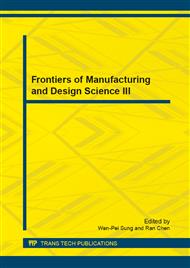[1]
US Patent – 5, 921, 099; Air conditioner temperature control apparatus; Inventor: Seon Woo Lee; Assignee: Samsung Electronics Co., Ltd. Issue date: Jul 13, (1999).
Google Scholar
[2]
US Patent – 5, 148, 977; control system for air conditioner; Inventors: Yozo Hibino, Susumu Nakayama, Hiromu Yasuda, Kensaku Oguni, Kenji Tokusa; Assignee: Hitachi, Ltd. Issue date: Sep 22, (1992).
Google Scholar
[3]
Technical case studies and articles on fuzzy logic and fuzzy logic based control systems www. sciencedirect. com, http: /en. wikipedia. org and http: /www. aptronix. com.
Google Scholar
[4]
Fuzzy control language specification International Electrotechnical Commission (IEC) 61131-7 standard.
Google Scholar
[5]
M. Zaheer-Uddin, The design and simulation of a suboptimal controller for space heating, ASHRAE Trans., vol. 99, pt. 1, p.554–564, (1993).
Google Scholar
[6]
R. E. Rink and H. Q. Le, Multivariable feedback control of bilinear processes in HVAC systems, in Proc. 24th IEEE Midwest Symp. Circuits Syst., Albuquerque, NM, 1981, p.777–781.
Google Scholar
[7]
C. D. Johnson, Accommodation of external disturbances in linear regulator and servomechanism problems, IEEE Trans. Automat. Control. AC-16, (1971).
DOI: 10.1109/tac.1971.1099830
Google Scholar
[8]
V. Levin and E. Kreindler, Use of disturbance estimator for disturbance Suppression, IEEE Trans. Automat. Contr., vol. AC-20, p.776–778, Oct. (1976).
DOI: 10.1109/tac.1976.1101360
Google Scholar
[9]
R. R. Mohler, Nonlinear Systems-Applications to Bilinear Control. Englgewood Cliffs, NJ: Prentice-Hall, (1991).
Google Scholar
[10]
A. L. Kleinman, On an iterative technique for Riccati equation computations,, IEEE Trans. Automat. Contr., vol. AC-13, p.114, (1968).
DOI: 10.1109/tac.1968.1098829
Google Scholar
[11]
R. Langari. Integration of fuzzy control within hierarchical structured control systems. IEEE Trans. Com. Intel., 1994, pp.293-303.
Google Scholar
[12]
X.M. Song, Research on LQR-fuzzy control algorithm of inverted pendulum system", Xi'an University of Electronic Science and Technology Master, s thesis, January (2006).
Google Scholar
[13]
D.Y. Li, H. Chen, J.H. Fan. A novel qualitative control method to inverted pendulum systems,. Proceedings of the 14th IFAC, July 1997, pp.485-490.
Google Scholar
[14]
S. Deris, S. Omatu. Stabilization of inverted pendulum by the genetic algorithm,. IEEE International Conference on Systems, Man and Cybernetics, 1995, pp.383-388.
DOI: 10.1109/icsmc.1995.538481
Google Scholar
[15]
F. Bouslama, A. Ichikawa. Application of neural network to fuzzy control,. Neural Networks, June 1993, pp.791-799.
DOI: 10.1016/s0893-6080(05)80124-8
Google Scholar
[16]
J. Llinas, E. Waltz. Multisensor data fusion,. Artech House, Norwood, Massachusetts, 1990. pp.8-15.
Google Scholar
[17]
Y. He, G.H. Wang. Multisensor information fusion with applications, Publishing House of Electronics Industry, Beijing, 2000, pp.1-10.
Google Scholar


